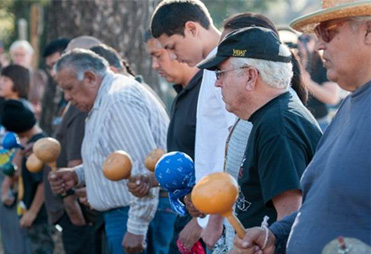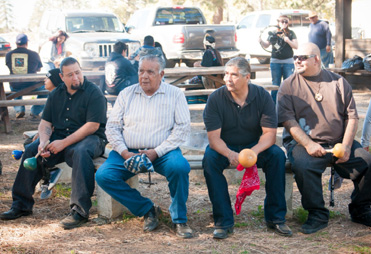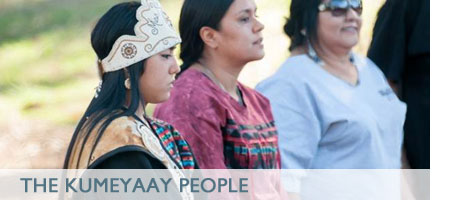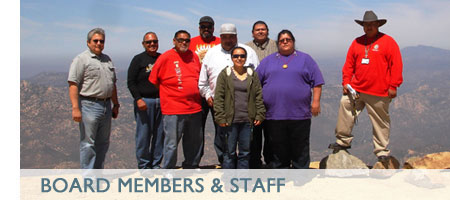Aboriginal Territory of the Kumeyaay Diegueno Nation

Birdsingers
The Kumeyaay aboriginal territory spans seventy-five miles north and south of today’s international border, including much of California’s San Diego and Imperial counties as well as portions of Baja California. Before Spanish and American colonization, the Kumeyaay governed their territory under a complicated system of alliances and overlapping territories through their shamull (clan) system. Extensive trading trails traversed the Kumeyaay territory and extended far into neighboring lands of the Cahuilla, Cupeño, Quechan, Cocopah, Chemehuevi, Pai Pai, and Kiliwa.
The Kumeyaay had extensive ecological knowledge of the environment, and engineered wetland structures, managed fire, and produced agriculture. Due in part to this detailed ecological knowledge, the Kumeyaay were able to support a population greater than 80,000 prior to 1770. A shamull would travel seasonally through their clan territories to harvest resources. On the occasion of social and religious events, shamull would celebrate together at special places. Contact with Spanish and American colonizers introduced disease, warfare, and social upheaval that debilitated the Kumeyaay. By 1910, less than 3,000 Kumeyaay maintained their identity in isolated populations.

Kumeyaay Bird Singers at a gathering
organized by the KDLC in October 2013.
Direct political control of the Kumeyaay lands has been reduced to twelve small reservations in the U.S. and four Ejidos in Mexico. However, Kumeyaay continue to live throughout the traditional territory and exercise direct involvement in land use issues, environmental management, and cultural and repatriation concerns.
Through the work of the KDLC, the Kumeyaay people have been able to regain direct management of some of these traditional territories. Just as importantly, the work of the KDLC has helped maintain traditions through the protection of sacred sites for all Kumeyaay, ranging from the submerged sites off the coast of California to the sacred mountain Kuuchamaa. The KDLC also represents Kumeyaay unity, bringing together all Kumeyaay communities with a united mission.






